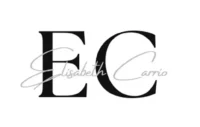In recent years, several leadership theories have been put forward in an attempt to understand leaders who are innovative, creative, value-driven, and resilient in the face of change. Among these theories is Judi Neal's (2006) term, "Edgewalkers," a word that is difficult to translate easily into English, but which evokes people who walk between two worlds and build bridges between different paradigms or systems of thought. We could call them "idea brokers," in reference to Egyptian mythology. They are visionaries and enthusiasts whose dream is to make the world a better place, especially the professional world.
Other names have been given to them in the Anglo-Saxon world: 'Difference makers' or 'pragmatic visionaries' (Waddock, 2008), 'intellectual shaman' (Frost and Egri, 1994) or 'tempered radicals' (Meyerson, 2001). But all these authors define these visionary facilitators in the same way: "people who want to succeed within their organization, while living their values or their identity, even if these seem disconnected from the dominant culture of their organization.
Literally the word ofEdgewalkers, Neal's proposed term would translate as "walker on an edge," between two worlds, one spiritual (or intuitive if we refer to Otto Scharmer's U theory) and the other material. Neal thus described these business leaders as wanting to positively influence their environment, and this in accordance with their spiritual values.
A paradigm shift
As already discussed in previous articles, new approaches are emerging in the business world, approaches that reconcile spirituality, beliefs and leadership (Collins, 2001; Kotter and Cohen, 2002; Oakley and Krug, 1991; Secretan, 2006). The old paradigms that valued the lawless, ambitious leader ready to do anything to succeed have long since faded (Renesch, 2001; Weatley and Fruez, 2011). They have given way to the humanist leader, for whom all action must have meaning and be part of societal progress.
If we use the reading grid of the dynamic spiral (Cowan and Don Beck, 1996), the professional world moves from the red level (egocentric with a need for power, domination and self-assertion) to the blue level (collective, normative and transcendent, characterized by a search for meaning)
According to theorists including Neal, facilitators have five specific character traits and five skills. "Fafflicers" are self-aware; they are passionate, honest, visionary, and playful. Their skills include knowing how to connect with the emerging future (see Theory U), taking risks, daring to act, focusing their efforts, and assessing situations.
Are you an edgewalker?
In 2007, Neal developed a 100-item questionnaire to measure these ten parameters. Subsequent studies were conducted to reduce the number of items to 20 while maintaining the test's validity and reliability (Neal and Hoopes, 2012). Below, I invite you to discover the test and take it.
Are you a visionary leader? Is your organization? Edgewalkers Test
Elisabeth Carrio
